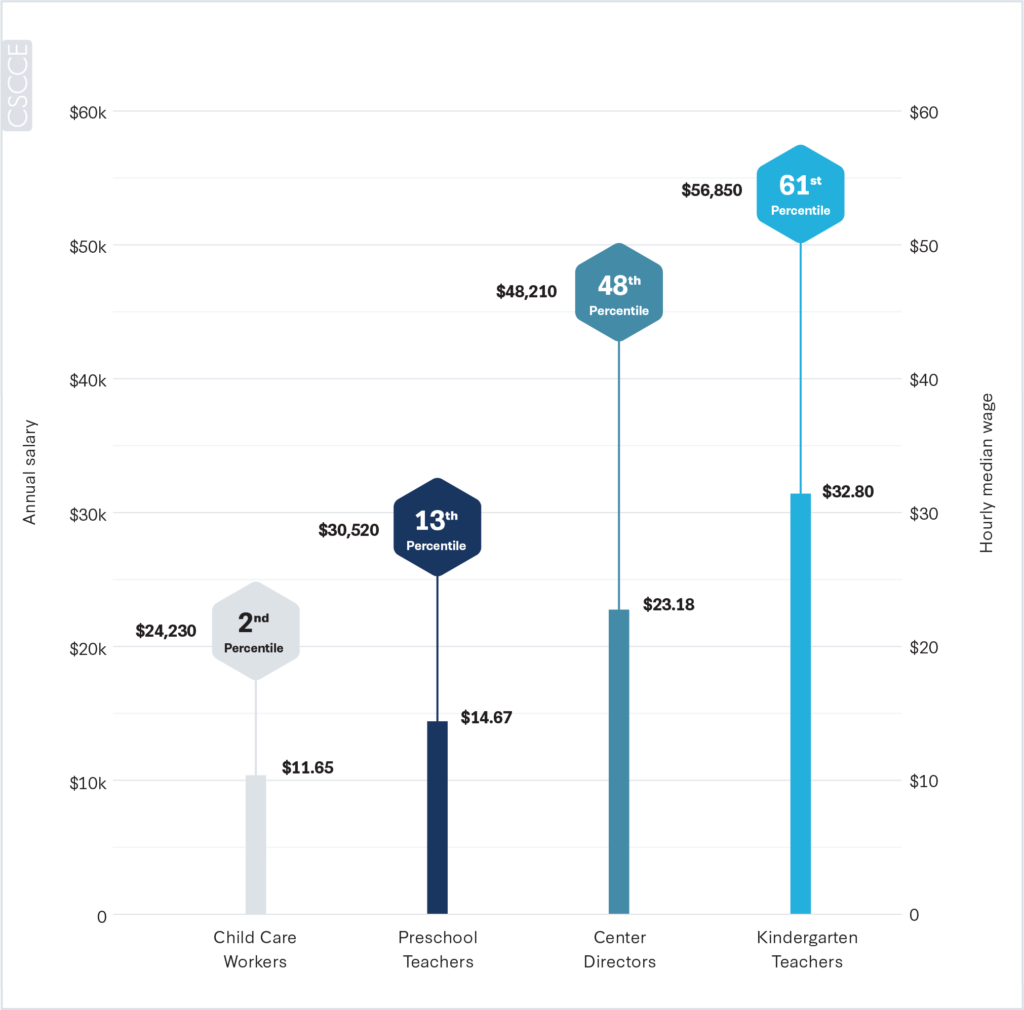Our economic recovery requires robust investments in child care, and child care workers. We can’t ask parents to bear all the burden, and we can’t ask workers to face rock bottom wages. We need the federal government to do more.
One of the top planks of the Biden administration’s economic recovery proposal is substantial new investments in child care. And rightly so. Advocates note that child care is infrastructure--the underpinning that enables all other work, the equivalent of roads and bridges to expedite economic activity, bringing parents (especially women) back to the labor force.
Which is all to the good. Further, the plans ask us to acknowledge that the burden of paying for child care shouldn’t fall solely on the shoulders of working families. Just as public education is a good that benefits the whole of society, so is child care. It’s time to for all of us to share the responsibility for the benefit of having healthy, engaged, educated small people who will grow up to be happy productive big people.
But as we work to fix the child care system in the US—to make sure we have a solid, functioning, reasonably priced system—let’s also make sure we fix the way the system treats workers. And that requires a profound and very deep change.
For a start, the child care industry has been painted with the brush that affects many jobs historically associated with the household or family; broadly considered “women’s work,” it leans on women, and undervalues and underpays their labor. Child care workers are overwhelmingly women; are disproportionately Black, Latina, Indigenous, Asian American and Pacific Islander, and immigrant; and are overwhelmingly underpaid.
In fact, child care is one of the most underpaid professions in the economy; the poverty rate among child care workers is more than double that of other women workers. (See chart below.)
While wages vary dramatically across the country, they never rise to an adequate level. Even in states with high median salaries for child care workers (e.g., Washington and the District of Columbia), child care workers’ salaries are still shockingly low, and below the average salary of all other teachers (including preschool and kindergarten teachers), and even of restaurant workers.
But it’s hard for child care workers to demand big bumps in their wages, because those wages come primarily from the pockets of the families. While some industries can easily afford to pay workers more (by raising prices or reducing shareholder dividends), child care is an industry where for workers to receive higher wages, families are charged higher fees.
Sadly, child care is already too expensive for most families to afford at all. In 29 states and the District of Columbia, infant care costs exceed the average cost of in-state college tuition at public four-year institutions. The result of this funding model is the exodus of workers from the child care sector due to low wages, leaving working families without the care they need.
It’s clear that the answer is not asking families to pay more. Our government needs to step up.
Luckily, the Biden administration has proposed significant investments in the child care industry, and Congress can make it a reality via a multi-trillion-dollar bill meant to help our nation recover from the pandemic. The original request from the administration was for a minimum of $250 billion to go toward child care so families would pay no more than 7% of household income on child care (currently for most families it exceeds 10%), and for child care workers to receive proper pay and benefits.
For those that think the price tag for this needed investment in child care is too high, the cost of lacking child care is higher. Due in large part to care responsibilities, women leaving the workforce in droves is costing the US economy an estimated $650 billion. Investing in child care–especially child care workers–has the potential to pay us all back.
We must call on Congress to invest in this vital social infrastructure, and to ensure child care workers earn proper wages. If money is funneled into child care accessibility for families, but not to support the workers that make the sector run, there will be no workers to provide the care needed.
The child care sector is only one place where workers need more: higher wages, safer conditions, and rights to organize. Millions of workers are finding it hard to survive, and impossible to thrive.
Right before Labor Day, Oxfam will release the 2021 version of our annual Best States to Work Index, where we find, once again, that no state mandates a minimum wage that covers the basic cost of living, much less the cost of child care.
After decades of inaction, it’s well past time for the federal government to step up to raise the wages for all workers, including child care workers.
Yes, child care is infrastructure, and yes, we all need to share the cost. But we also need to make sure child care workers earn enough to be able to raise their own families, and invest in the future.
Take action! Contact your Congressperson to urge investment in child care workers.




